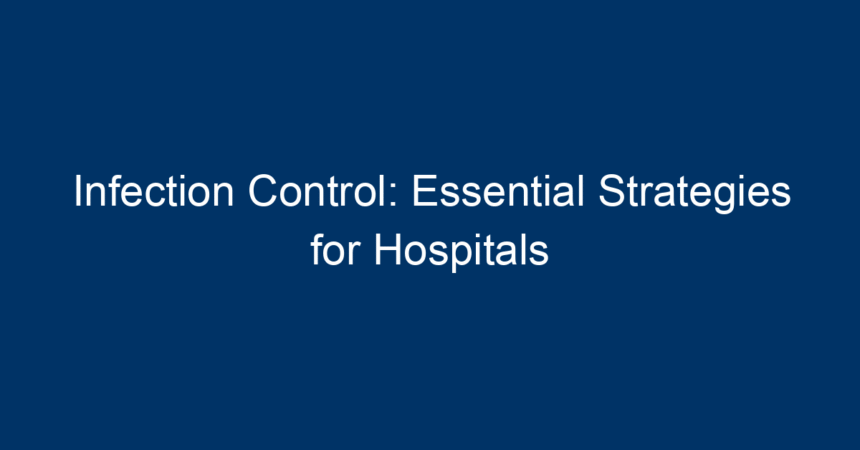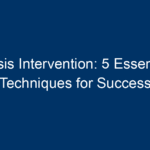Infection control in hospitals is a critical aspect of healthcare that seeks to prevent the spread of infectious diseases among patients, staff, and visitors. Effective infection control strategies not only safeguard the health of individuals but also enhance the overall efficiency of healthcare systems. With the rise of antibiotic-resistant bacteria and global pandemics, the importance of rigorous infection control practices cannot be overstated. This article will delve into essential strategies for hospitals to implement robust infection control measures.
Understanding Infection Control
Infection control refers to the policies and procedures used in hospitals to minimize the risk of spreading infections. Hospitals are high-risk environments where patients may have weakened immune systems, making them more susceptible to infections. An effective infection control program focuses on three main aspects: prevention, surveillance, and management of infections.
The Importance of Infection Control in Hospitals
The stakes are high when it comes to effective infection control. Poor infection prevention practices can lead to an array of complications, including prolonged hospital stays, increased healthcare costs, and even higher mortality rates. Moreover, preventing hospital-acquired infections (HAIs) is essential for maintaining patient trust and ensuring quality care.
Key Infection Control Strategies
1. Hand Hygiene
Hand hygiene is the cornerstone of infection control. Healthcare workers must wash their hands frequently, especially before and after patient contact.
-
Hand Sanitizers: Alcohol-based hand sanitizers can effectively reduce germs when soap and water are not available. Hospitals should ensure that hand sanitizers are readily accessible throughout the facility.
- Training: Ongoing training and reminders about proper handwashing techniques can significantly improve compliance among healthcare staff.
2. Use of Personal Protective Equipment (PPE)
Personal protective equipment (PPE) serves as a vital barrier between healthcare workers and potential infections.
-
Types of PPE: Masks, gloves, gowns, and face shields are essential in protecting both staff and patients.
- Correct Usage: Education on the proper donning and doffing of PPE is crucial. Improper usage can lead to contamination and increased risk of infection.
3. Isolation Precautions
Isolation precautions help limit exposure to infectious agents.
-
Contact Precautions: For patients with known or suspected infections, contact precautions should be implemented to prevent transmission.
- Airborne Precautions: In cases of airborne diseases, negative pressure rooms should be utilized to contain pathogens.
4. Environmental Disinfection
Maintaining a clean hospital environment is crucial for effective infection control.
-
Routine Cleaning: High-touch surfaces such as doorknobs, bedrails, and medical equipment need to be frequently disinfected.
- Chemical Agents: Using EPA-approved disinfectants is essential. Hospitals should develop a schedule that outlines when and how often different areas require cleaning.
5. Surveillance and Reporting
Continuous monitoring of infection rates is an essential component of infection control.
-
Infection Surveillance Systems: Implementing robust surveillance systems allows hospitals to track infection rates, identify outbreaks, and institute timely interventions.
- Reporting Mechanisms: Hospitals should have transparent reporting systems to provide feedback on infection rates to staff and take corrective action when necessary.
6. Antibiotic Stewardship
Antibiotic resistance is a growing concern in healthcare settings.
-
Guidelines for Usage: Implementing guidelines for appropriate antibiotic prescribing helps prevent the overuse of antibiotics, which can lead to resistant strains of bacteria.
- Education: Ongoing education about the implications of antibiotic misuse is crucial for all healthcare providers.
7. Patient Education
Engaging patients in their care can significantly contribute to infection prevention.
-
Informative Materials: Providing educational materials about hygiene, wound care, and the importance of notifying staff about any signs of infection can empower patients.
- Patient Involvement: Encouraging patients to participate in their care and maintain personal hygiene is essential for successful infection control.
8. Continuous Training and Improvement
Healthcare is an ever-evolving field, and infection control practices must keep pace.
-
Regular Training: Conducting regular training sessions for staff ensures everyone is updated on the latest infection control protocols.
- Quality Improvement Initiatives: Hospitals should embrace a culture of continuous improvement by conducting regular assessments of infection control practices and outcomes.
Conclusion: Actionable Insights for Enhanced Infection Control
Infection control in hospitals is a multifaceted challenge that requires a collaborative approach. By implementing effective strategies such as hand hygiene, PPE usage, surveillance systems, and patient education, healthcare facilities can significantly mitigate the risk of infections.
Key Takeaways:
- Prioritize Hand Hygiene: Install hand sanitizers and conduct regular training on handwashing.
- Utilize PPE Effectively: Ensure all staff are educated on the correct use of PPE.
- Monitor and Adapt: Leverage infection surveillance data to make informed decisions and adapt protocols.
- Engage Patients: Provide educational resources and involve patients in their care to foster a culture of safety.
- Embrace Continuous Learning: Regular training sessions and quality assessments can lead to sustained improvements in infection control practices.
By adopting these strategies, hospitals can not only enhance their infection control measures but also ensure a safer environment for patients, staff, and visitors alike. Investing in robust infection control systems is not just about compliance; it is about the commitment to providing safe, quality care in an often unpredictable healthcare landscape.




